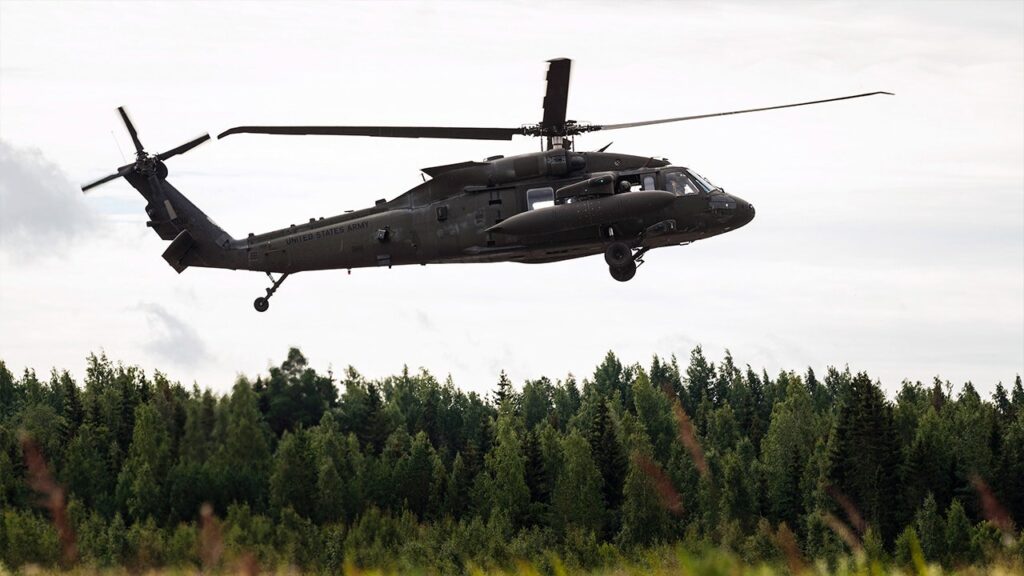
Audience
- Sentiment: Neutral
- Political Group: No specific group
- Age Group: Adults 25-54
- Gender: Both genders
Overview
- An accident involving a Black Hawk helicopter and an American Airlines jet near D.C. was caused by poor communication and altitude mix-ups.
- The National Transportation Safety Board is investigating the incident to improve aviation safety and communication systems.
- The article emphasizes the importance of clear communication and reliable technology in preventing aviation tragedies.
A Close Call in the Sky: Understanding the Helicopter and Plane Crash Near D.C.
Imagine you’re at an amusement park, ready to hop on your favorite ride. As you wait in line, the ride operator goes through safety instructions, making sure everyone knows what to do. Now, picture this: halfway through the thrilling ride, something goes wrong because someone didn’t hear the instructions properly. Terrifying, right? That’s somewhat similar to what happened in a serious accident involving a U.S. Army Black Hawk helicopter and an American Airlines jet near Washington, D.C. This event, which had deadly consequences, was the result of a mix of poor communication and mistaken information about how high each aircraft was flying.
In this article, we’re going to unpack what went wrong, why it matters, and how incidents like this can help improve aviation safety in the future. Fasten your seatbelt (or should I say, your helicopter strap?) and let’s take off!
What Happened
On a regular day just outside our nation’s capital, a Black Hawk helicopter was flying high above the ground. Its mission? A routine check flight. Instead of soaring through the skies during the day, the crew was using night vision goggles, which allow pilots to see in the dark. Now, you might ask, “Isn’t that cool?” Well, it sounds cool until technology doesn’t work the way it should.
Meanwhile, an American Airlines jet was also flying in the same airspace. Unfortunately, there was a mix-up in altitude readings—that’s how high each aircraft was off the ground. One plane thought it was flying higher than it actually was while the other was flying lower but thought it was higher. Imagine playing a game of tag where everyone has different heights and can’t see each other; the chances of colliding go up dramatically!
The Breakdown of Communication
One of the most critical parts of flying is communication. Pilots talk to air traffic control (ATC), and ATC makes sure all aircraft are in their designated spots and know where other planes are flying. In this incident, it seems that incomplete radio transmissions meant the helicopter crew might not have received key instructions about avoiding the jet. Think of it like if your teacher started giving instructions for a group project but got interrupted midway—some students might end up not knowing what to do!
For pilots, missing out on proper instructions can have serious consequences. In this case, there were probably some messages sent over the radio that didn’t go through clearly, and that confusion was a huge factor leading up to the crash. The radio is like a lifeline up there in the sky. When communication fails, it can lead to catastrophic situations, just like what transpired here.
The Altitude Issue
Now, let’s talk about altitude readings. Pilots need to know exactly how high they are flying to avoid crashing into each other. It’s similar to gamers keeping track of different levels in a video game. If one person thinks they’re on level five and another thinks they’re on level six, they might end up bumping into different obstacles or, worse, each other!
In this incident, there were conflicting altitude data. That means the helicopter and the jet thought they were at different heights, which led them dangerously close together. Such conflicting data often arises due to faulty altimeters. An altimeter is the instrument that tells pilots how high they are above sea level. If an altimeter isn’t working correctly, it can lead to dangerous situations like what happened here.
Learning from Tragedy
The aftermath of the Black Hawk and American Airlines accident has led to investigations by the National Transportation Safety Board (NTSB). They are getting down to the nitty-gritty of what caused this tragedy. Their investigation is thorough and could take over a year because they want to ensure they cover every detail and prevent something similar from happening again.
One of the most important takeaways from this incident is the need for reliable communication systems in aviation. Just like you would want your friends to clearly relay information while planning a hangout—like the movie time and place—aircraft crews need clear and accurate guidance in the sky. It is crucial, and improvements to technology can save lives.
The Bigger Picture: Aviation Safety
This incident wasn’t just an isolated event. It’s a reminder of the importance of aviation safety in general. In a world where air travel is quite common, we have to appreciate the complexities of flying and the meticulous work that goes into ensuring everything goes smoothly. There are thousands of flights across the globe every day, each one with safety protocols to prevent accidents like this. Following the rules and using the latest technology is essential to making sure we all arrive safe and sound to our destinations.
Think about it this way: we trust that when we board a flight, everything will go according to plan. But even the smallest glitches can lead to nightmare scenarios, as we saw with this Black Hawk and American Airlines incident. It’s a reminder that pilots, engineers, and air traffic controllers need to work together effectively, just like a sports team aiming for victory.
Moving Forward
So, what can be done to prevent incidents like these in the future? Well, investigators propose improvements in communication systems to minimize the chances of stepped-on transmissions (when multiple transmissions overlap) and upgrading altimeter technology to ensure it’s reliable. They also emphasize the critical importance of regular training for all aviation professionals to adapt to potential complications in communication or equipment failures.
In conclusion, while this incident was tragic, it serves as a glaring reminder of the complexities involved in aviation. The work of pilots, engineers, and air traffic controllers is challenging, but they are dedicated to ensuring the safety and security of everyone flying in the skies. We must learn from experiences like this one to make air travel as safe as possible in our rapidly changing world.
Now it’s your turn! What do you think could be done better in terms of communication and technology in aviation? Have you ever had a scary experience during a flight? Share your thoughts in the comments below!






